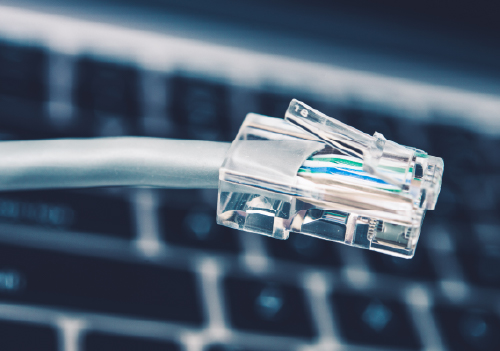5 Steps to Resolve Slow Internet Speed

5 Steps to Diagnose and Resolve Slow Internet Speeds
Nothing is more frustrating than buffering videos, lagging virtual meetings, or painfully slow downloads. Whether you’re streaming your favorite shows, attending virtual meetings, or conducting important research, slow internet speeds can disrupt your productivity. Why is my internet slow? Understanding the root causes of sluggish connectivity, reasons for slow internet, and knowing how to address them is crucial to ensuring a seamless online experience.
In this guide, we’ll walk you through how to resolve slow internet at home, troubleshoot, and provide the best tips to improve internet speed. From troubleshooting internet issues to applying a slow broadband fix, boost wifi signal, and optimize network performance, here are five expert steps to improve internet speed and get your connection back on track.
Step 1: Check Your Internet Speed
The first step in addressing slow internet speeds is to determine the current speed of your connection. Numerous online speed test tools are available such as speedtest.net and fast.com, allowing you to measure your download and upload speeds accurately. It’s also essential to understand the internet plan you’re subscribed to and compare the actual speeds with what you’re paying for. Discrepancies between expected and actual speeds may indicate underlying internet speed issues that need attention.
Step 2: Restart Your Devices and Router
Sometimes, the simplest solution can be the most effective. Troubleshoot slow Wi-fi and internet issues by restarting your devices, including computers, smartphones, and tablets, can clear temporary glitches and improve connectivity. Additionally, boost wifi signal by power cycling your router—turning it off, waiting for a few minutes, and then turning it back on—can refresh the connection and resolve issues related to the router’s performance. Allow your devices to reconnect after the restart process to ensure proper functionality.
Step 3: Diagnose Wi-Fi Interference
Wi-Fi interference from neighboring networks, electronic devices, or physical obstructions can significantly create internet speed issues. Identify potential sources of interference, such as cordless phones, microwave ovens, or thick walls, and consider relocating your router and devices to minimize obstructions. Optimize network performance with Wi-Fi analyzer apps such as NetSpot and WiFi Monitor can help identify the optimal channel for your network, reducing interference and improving signal strength.
Step 4: Update Router Firmware and Drivers
Outdated router firmware and device drivers can be one of the reasons for slow internet and security vulnerabilities. Regularly check for firmware updates for your router and install them as needed. Go to your Router device settings and check for an updated firmware version.
Updating firmware and drivers can enhance performance, stability, and security, ensuring a smoother internet experience.
 Step 5: Contact Your Internet Service Provider (ISP)
Step 5: Contact Your Internet Service Provider (ISP)
If you’ve followed the previous steps and continue to experience slow internet speeds, it may be time to contact your Internet Service Provider (ISP) for assistance. Report any persistent issues you’re facing, inquire about service outages in your area, and request technical support if necessary. Your ISP can troubleshoot connectivity issues from their end and provide solutions to improve your internet experience.
Additional Tips for Optimizing Internet Speed
Slow internet can be frustrating, especially when you’re working remotely or streaming content. If you’re wondering how to fix slow internet, the first step is running an internet speed test to determine if your actual speed matches what you’re paying for. If there’s a major drop, it may be time to troubleshoot your internet connection. Start by restarting your modem and router, then check for any firmware updates. To improve your Wi-Fi signal, position your router in a central location, away from obstructions and electronic interference. Consider upgrading your equipment or adding range extenders to boost Wi-Fi signal throughout your space. These are simple yet effective ways to implement a slow internet speed fix without needing professional help. Addressing these issues can lead to a noticeably faster and more reliable connection.
In addition to the primary steps outlined above, here are some additional tips to fix slow internet and for optimizing your internet speed:
- Use wired connections where possible: Slow internet troubleshooting, ethernet connections typically offer faster and more stable speeds compared to Wi-Fi.
- Limit bandwidth-heavy activities during peak hours: Avoid streaming 4K videos or large file downloads during times when internet traffic is high.
- Enable Quality of Service (QoS) settings on your router: Prioritize important traffic types, such as video conferencing or online gaming, to ensure a smoother experience. (how?)
- Consider upgrading your internet plan: If you consistently require higher speeds or have multiple devices connected simultaneously, upgrading to a faster internet plan may be beneficial.
Conclusion
Addressing slow internet speeds requires a systematic approach, as outlined above. However, if despite your best efforts, slow internet speeds persist and disrupt your online activities, it may be time to call in the experts. This is where partnering with a Managed Service Provider (MSP) like Protected Harbor can be invaluable.
Protected Harbor offers a range of Managed IT Services designed to optimize your digital infrastructure and ensure smooth operations. Our MSP services include proactive monitoring, security solutions, cloud management, and IT consulting tailored to your business needs. With us by your side, you can offload the burden of IT management and focus on growing your business.
As a proactive measure, we also offer a complimentary IT Audit to assess the health and efficiency of your IT systems. This audit provides valuable insights into potential areas for improvement and helps you make informed decisions about your technology investments.
So, if slow internet speeds persist despite your efforts, don’t hesitate to reach out to us and leverage our experience to resolve your IT challenges. Schedule your free IT Audit today and experience the difference that Protected Harbor can make for your business.





 Advancements in IoT Technology
Advancements in IoT Technology

